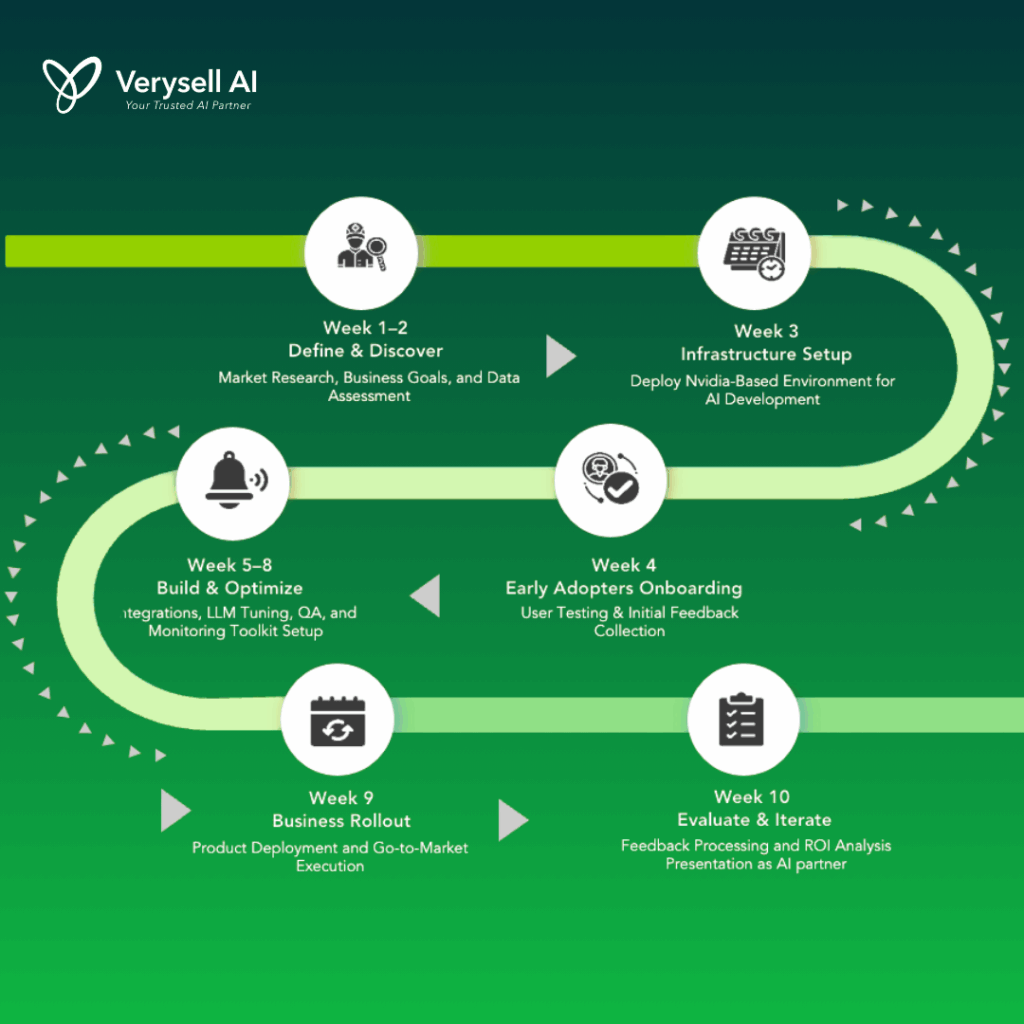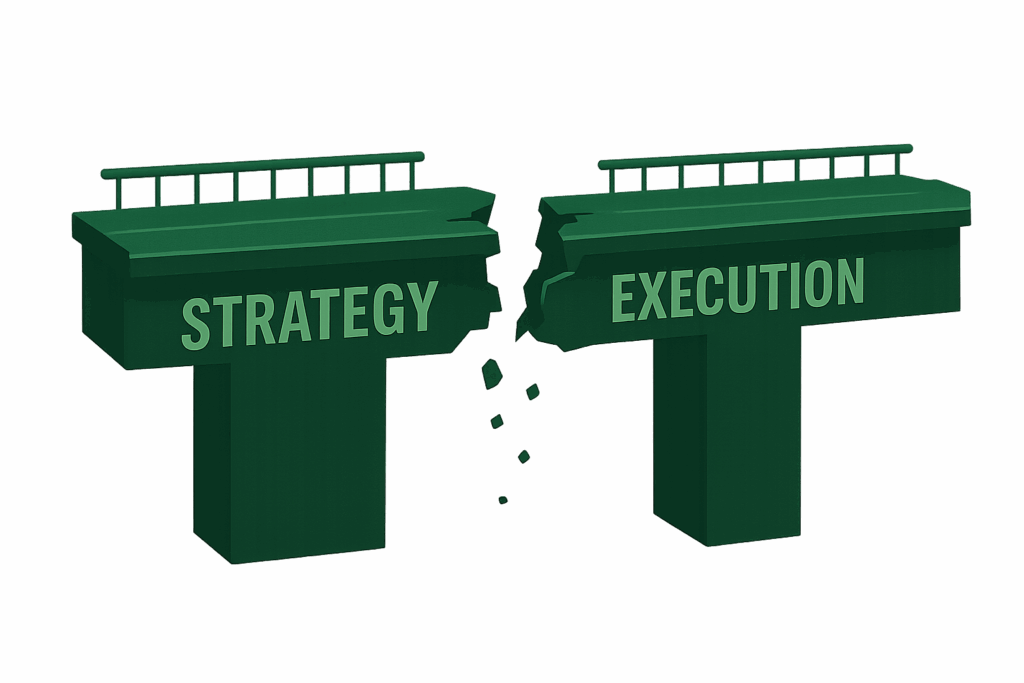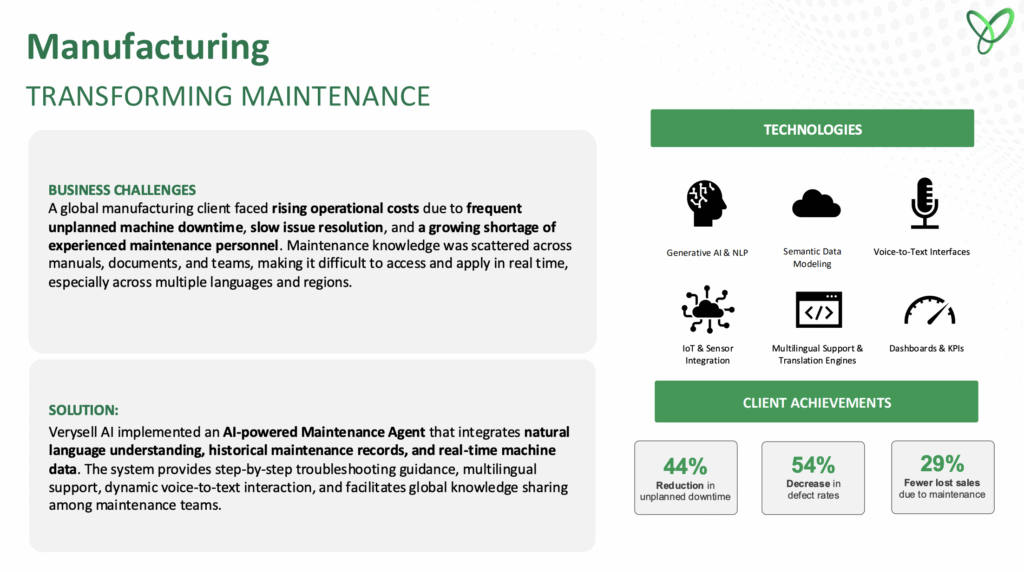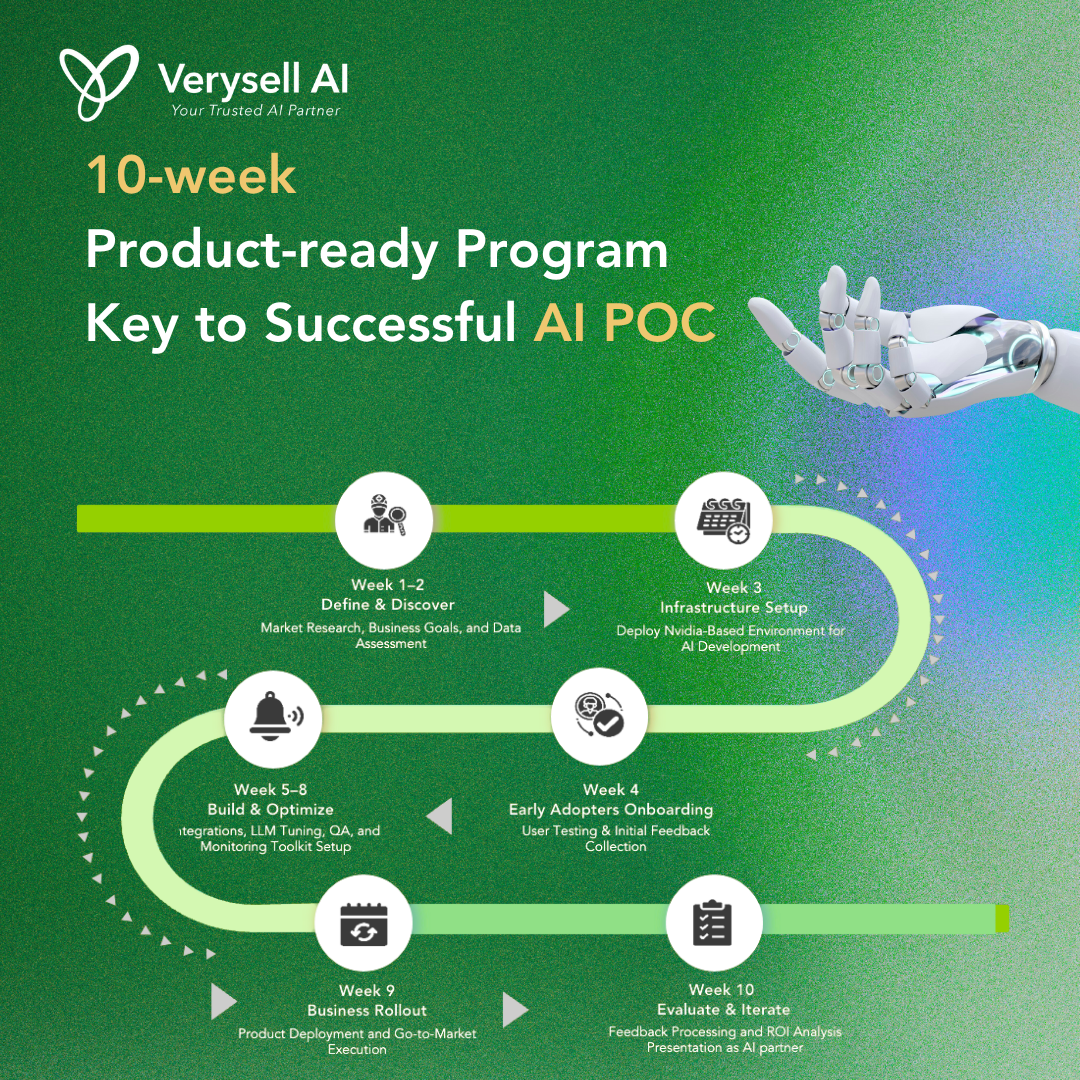Your company has invested significant time and resources in AI. You have had five AI POCs running across departments. Not one has reached full AI implementation in business. Deadlines slipped. Budgets ballooned. Then, the CTO summed it up best: “We kept building prototypes that no one used.”
Sounds familiar? This isn’t an isolated story. It’s the norm.
Across industries, companies are eager to harness AI, but they’re stuck. Despite best intentions, 80% of enterprise AI POC projects fail to meet their objectives, never reaching deployment (Harvard Business Review).
Your projects stall in pilot purgatory, and internal teams lose confidence. The technology feels promising, but results remain out of reach.
The problem is the approach.

1. The Hidden Pitfalls Behind AI POC Failure
In theory, AI promises transformation.
In practice, many enterprises find themselves stuck in the AI POC stage, watching prototype after prototype stall before reaching real deployment. Despite investments, intent, and talent, these AI projects fail to deliver business value. But why?
1.1. The Strategy-Execution Disconnect

It starts with a breakdown in translation. Executives aim for outcomes such as automated decisions, cost reductions, and enhanced customer experience. But data science teams often chase metrics like model accuracy or F1 score, disconnected from business logic.
As a result, the AI prototype may perform well in a sandbox, but it solves the wrong problem. It predicts what’s predictable, not what’s useful.
This misalignment is surprisingly common. According to Gartner (via VentureBeat), 85% of AI projects fail to deliver on their intended business outcomes due to poor data quality and relevance. Not because the tech doesn’t work, but because it was never solving the right problem in the first place.
1.2. Building Slowly in a Fast-Moving Landscape
In AI, speed matters. The tools and techniques evolve weekly. What was innovative six months ago may be irrelevant today. Yet, many companies still treat AI like traditional IT, taking 6 – 18 months to move a genAI project from intake to production (AI Gov benchmark by ModelOp), being stuck at AI POCs only to discover that it’s already outdated by the time it’s complete.
This slow, siloed build cycle doesn’t just waste time. It erodes trust. Business leaders grow skeptical. Teams get discouraged. Momentum stalls.
1.3. The POC Trap
Too often, enterprises launch multiple AI POCs without a clear pathway to AI implementation. These prototypes demonstrate technical promise, but they’re disconnected from scalable operations. There’s no defined success criteria, no integration plan, and no ownership model.
Instead of being a stepping stone, the POC becomes a dead end. And it happens more often than you’d think: only 53% of AI models ever make it to production, according to VentureBeat.
Each stalled pilot adds to a growing pile of missed expectations. Eventually, even strong ideas lose executive buy-in, not because they failed technically, but because they were never designed to scale.
2. The 10-Week Sprint: A New Path to AI Deployment
At Verysell AI, we built a solution: a structured, 10-week product-ready program designed to transform high-potential AI ideas into working solutions fast.
It’s not just a compressed timeline. It’s a new model of collaboration that ensures business logic, technical execution, and real-world feasibility are aligned from day one.
Week 1 – 2: Define & Discover
In this initial phase, the focus is on grounding the AI initiative in real business needs. With the support of Verysell AI’s AI engineer team, businesses can:
- Conduct deep-dive workshops with stakeholders to uncover business pain points, user needs, and AI potential.
- Perform market analysis to benchmark against industry standards and explore innovation white space.
- Define clear business objectives and KPIs for the AI initiative, ensuring alignment across business and tech teams.
- Evaluate available data sources, identify gaps, and outline integration plans.
Why does this matter? Many AI projects fail because they start with the tech, not the problem. This phase ensures we build the right thing, not just build it right.
Week 3: Infrastructure Setup
Technical groundwork begins. AI team will:
- Set up a dedicated AI development environment using high-performance infrastructure (e.g., Nvidia GPU instances, scalable cloud services).
- Configure secure data pipelines and storage, ensuring compliance with internal policies and external regulations (GDPR, etc.).
- Install core tooling for data labeling, model training, version control, and collaboration.
This solid foundation allows models to be built, deployed, and scaled efficiently without bottlenecks or rework later.
Week 4: Early Adopters Onboarding
Before scaling development, it’s critical to test early assumptions
- Identify and onboard a group of early adopters, typically internal power users or domain experts.
- Share mockups, prototypes, or simplified tools with real users to test core functionality and usability.
- Collect structured feedback on user flows, expectations, and friction points.
- Start building intuitive interfaces that reflect familiar terminologies and workflows.
User adoption can make or break an AI solution. Getting real-world input early ensures the product is not just technically sound but also usable and trusted.
Week 5 – 8: Build & Optimize
This is the execution-heavy phase of the roadmap. The AI team delivers:
- Develop the production-ready version of the solution, including:
- AI/ML model training and tuning
- Domain-specific logic and guardrails to ensure contextual relevance and explainability.
- Integrate the AI system with existing business platforms (eg. Enterprise Resource Planning, Customer Relationship Management, dashboards, etc.).
- Conduct rigorous testing to ensure system stability.
- Set up a monitoring stack to track model drift, performance, errors, and user engagement.
This phase turns prototypes into robust, scalable tools that operate reliably in real-world settings.
Week 9 – 10: Business Rollout, Evaluate & Iterate
The final two weeks are all about preparing for a successful rollout.
- The solution undergoes rigorous testing to ensure reliability and consistency under real conditions.
- End-users and other stakeholders are trained and onboarded using intuitive interfaces, documentation, and support materials.
- A go-to-market or deployment strategy is finalized, whether that means internal rollout or broader commercialization.
- The team also sets up analytics and performance tracking to monitor impact and guide future improvements.
- Aggregate and analyze usage metrics, user feedback, and performance logs.
- Conduct a full ROI evaluation against Week 1 key performance indicators (KPIs) (e.g., efficiency gains, accuracy, revenue lift).
- Present a scaling roadmap, outlining next steps, potential use cases, and continuous learning loops.
It’s not just about delivering a solution. It’s about building long-term value through partnership and iteration.
This sprint-based approach ensures that AI solutions are not only technically sound but also business-ready: tested, adopted, and tied directly to measurable outcomes. Let me know if you’d like to tailor this to a specific industry or client.
3. What do You Gain after 10 Weeks?
Companies that adopt this AI POC model typically experience key benefits:
Faster time-to-impact
Rather than spending 18 months in traditional software cycles, companies move from idea to working AI prototype in as little as 10 weeks. For example, in the manufacturing sector, Verysell AI rapidly delivered an AI-powered Maintenance Agent that significantly improved uptime and reduced defect rates. This quick deployment timeline allows businesses to capture early value from AI while the technology remains relevant.
Higher deployment success
By aligning the AI POC from the outset with business logic and KPIs, companies increase the chances of real-world adoption. In BFSI, Verysell AI’s automated claim management solution was built around clear goals: reducing fraud, speeding up claims processing, and enhancing customer experience. The result was not just a technical success, but a deployed solution that met core business objectives.
Stronger internal alignment
Cross-functional collaboration is baked into the AI POC process, from business teams to data scientists and frontline users, ensuring shared ownership and smoother rollout. In the global manufacturing use case, multilingual support and real-time collaboration enabled consistent knowledge transfer across teams, building early buy-in and reducing friction at launch.
Reduced resource waste
This model avoids that trap by focusing on fast, purpose-driven POCs that either scale or fail fast, saving time and budget. One of our manufacturing clients achieved a 44% reduction in unplanned downtime and 29% fewer lost sales, concrete ROI from a scoped and executed POC.

4. Ready to Escape the POC Loop?
AI doesn’t have to be a high-risk experiment. With the right structure and speed, your next AI POC can become your first successful AI deployment.
Let’s talk about what 10 weeks can do for your AI roadmap through a discovery call!


